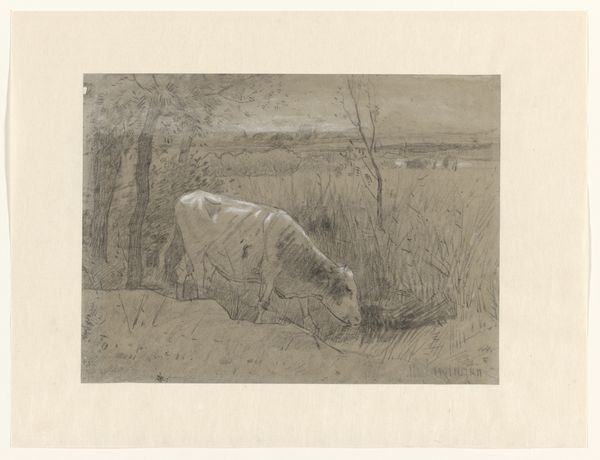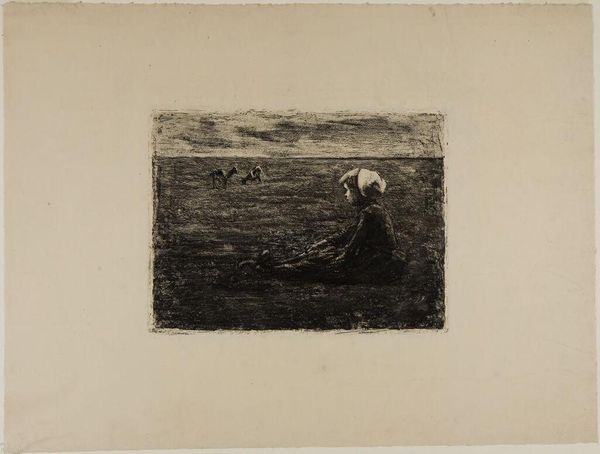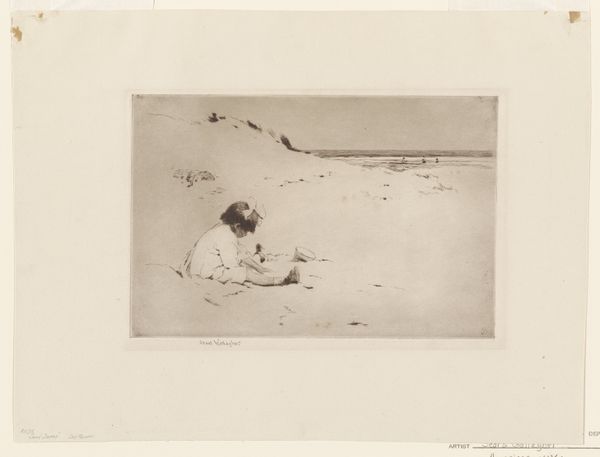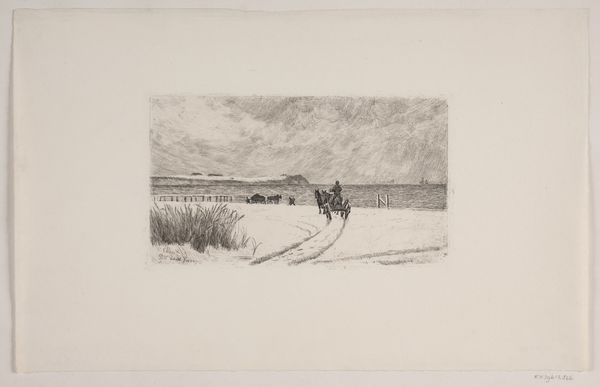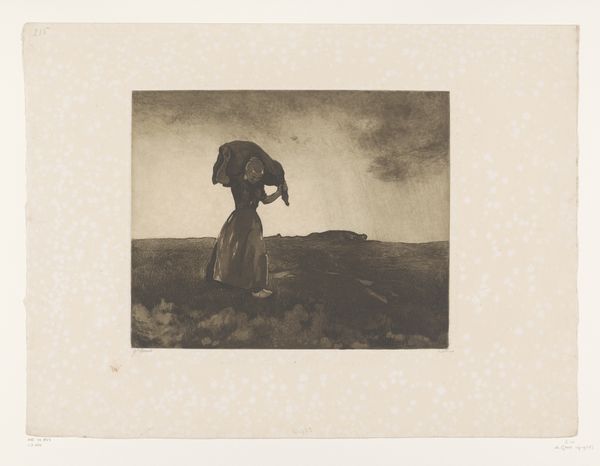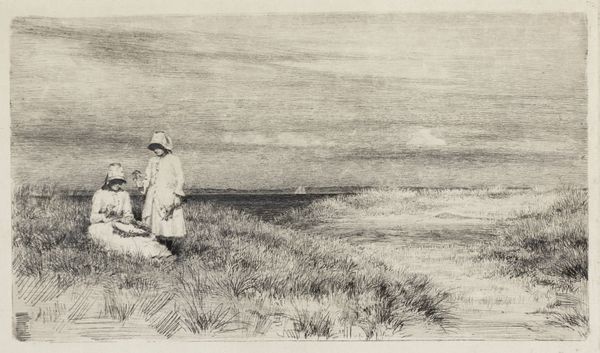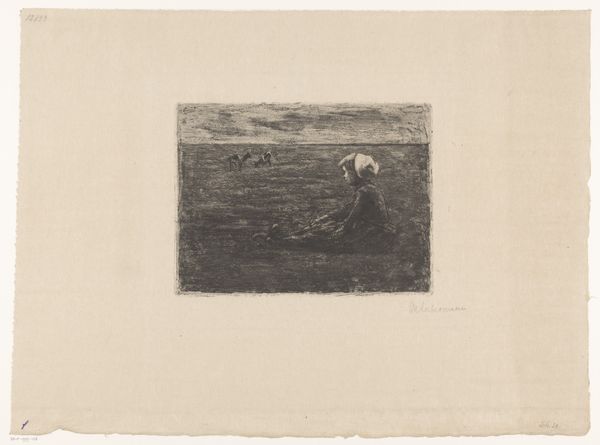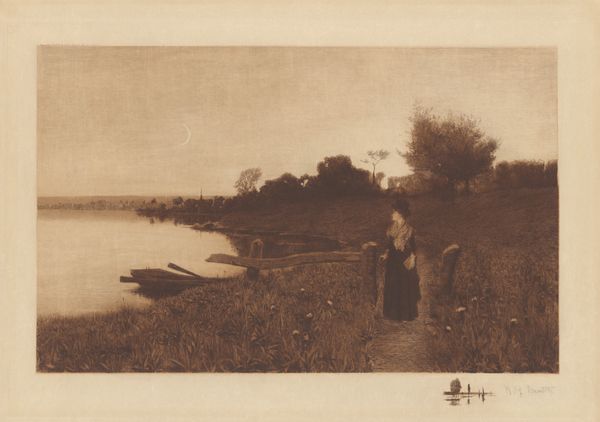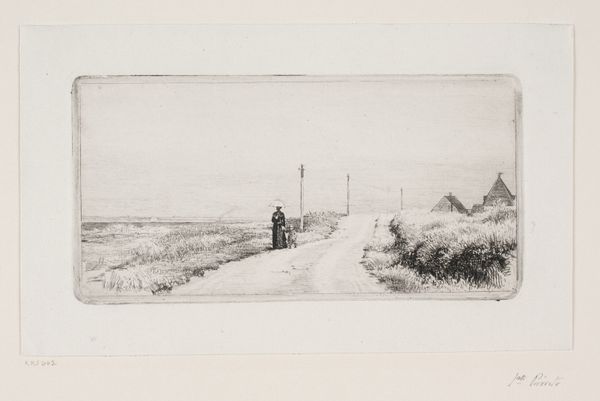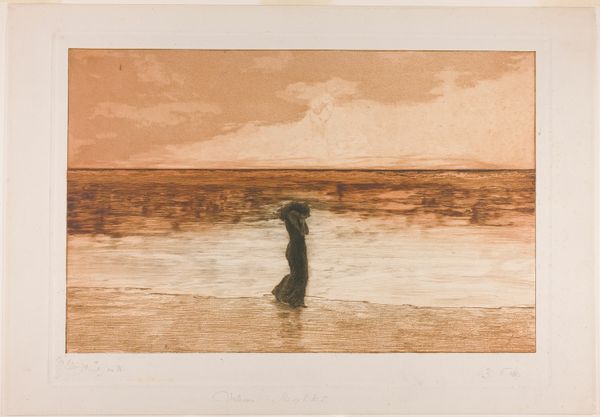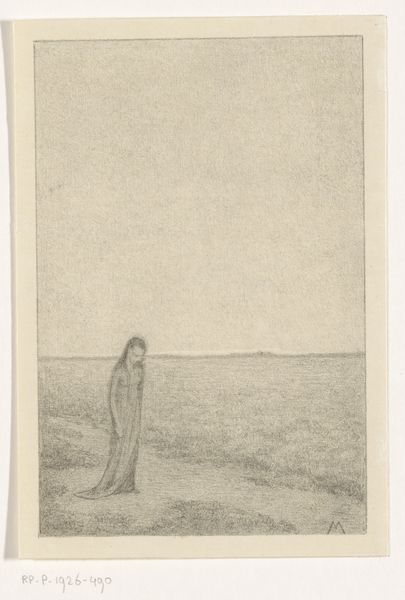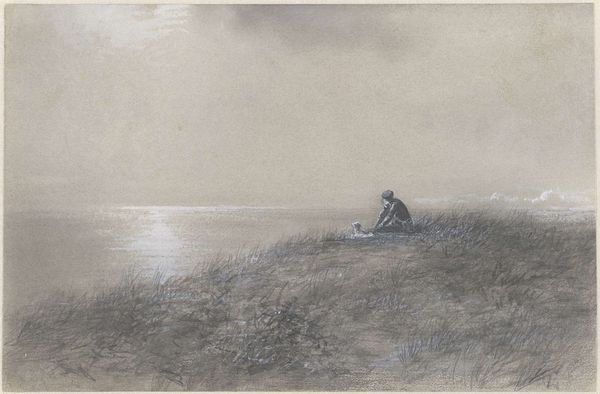
drawing, print, etching, paper
#
drawing
#
natural tone
# print
#
impressionism
#
etching
#
landscape
#
figuration
#
paper
#
pencil drawing
Dimensions: height 145 mm, width 245 mm
Copyright: Rijks Museum: Open Domain
Editor: This etching from the 1880s by Carl Bloch, titled "Vrouw en meisje in duinen", or "Woman and girl in the dunes", has such a lovely quiet mood. I'm really struck by how much texture he manages to achieve with, I think, just ink and paper. What's your take on this? Curator: I see this etching as a record of labor, particularly female labor, embedded within the landscape. Consider the materials: etching, a process inherently about replication and distribution. Paper, once meticulously handmade, then industrially produced. What tasks do we think the woman and girl were occupied with? Was it recreational or were they involved with, say, the local textile industry using the dunes’ resources? Editor: I hadn't thought of the dunes themselves as a resource, good point. But it also feels very...personal. Like a glimpse into someone’s private time. Curator: And how is this ‘personal’ experience shaped by, and in turn shaping, the broader social and economic context? Consider their clothing: likely made from textiles dependent on complex trade routes and labor systems. The "intimacy" is a construct as much as it is a "feeling." Can we extract what these subjects were experiencing, or are we seeing Bloch, the artist, mediating how labor is performed in this slice of 1880s life? Editor: So you're saying even a simple scene of a woman and child is tied to these massive systems of production? Curator: Precisely. Every mark on that paper, every line etched, speaks to the larger world of making and consuming. Consider the societal labor necessary to render them a commodity. Editor: I guess I was mostly reacting to the overall impression of leisure and calm, and not thinking about the material circumstances. Curator: But the beauty, or 'calm' as you describe it, can also draw us into thinking more carefully about those circumstances. Maybe it's the artist subtly inviting us to consider it more critically. Editor: Okay, that makes sense. It definitely changes how I'll look at similar art pieces from now on! Thanks for that.
Comments
No comments
Be the first to comment and join the conversation on the ultimate creative platform.
